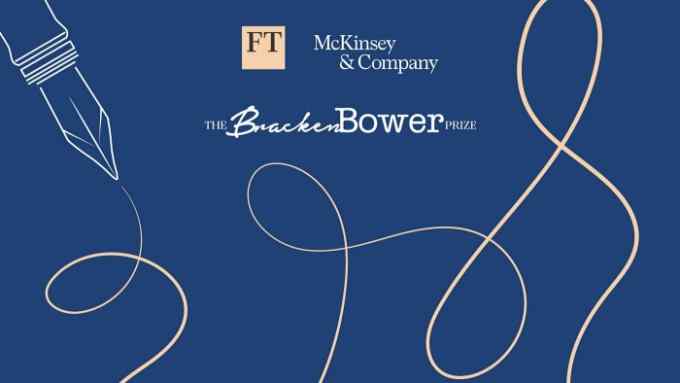Enter the FT’s Bracken Bower Prize 2021

Roula Khalaf, Editor of the FT, selects her favourite stories in this weekly newsletter.
The Financial Times and McKinsey have launched the 2021 Bracken Bower Prize, which provides a launchpad for young business authors.
The £15,000 award will go to the best proposal for a business book “about the challenges and opportunities of growth” by an author, or authors, under the age of 35.
The prize, now in its eighth year, aims to encourage a new generation of business writers. A number of shortlisted and longlisted Bracken Bower proposals have already progressed to publication.
Last year’s winner was Stephen Boyle, for New Money, about the potential of central bank digital currencies to transform the economy. In October, the 2019 winner Jonathan Hillman aims to publish his book The Digital Silk Road, based on his prizewinning proposal about the battle between the US and China for control over the next generation of technology.
The 2021 prize is open for entries until September 30, for authors under the age of 35 on November 30. Applicants are asked to submit an essay or article of no more than 5,000 words that conveys the argument, scope and style of a proposed full-length business book and include a description of its structure.
The judges will be looking for a proposal for a book that aims to provide a compelling and enjoyable insight into future trends in business, economics, finance or management. The prize will be presented in London on December 1, which will also honour the winner of the 2021 Business Book of the Year Award. Potential entrants can register their interest here to receive information and tips about how to prepare the proposal.
The prize is named after Brendan Bracken and Marvin Bower, architects of the modern FT and McKinsey, respectively.

Comments